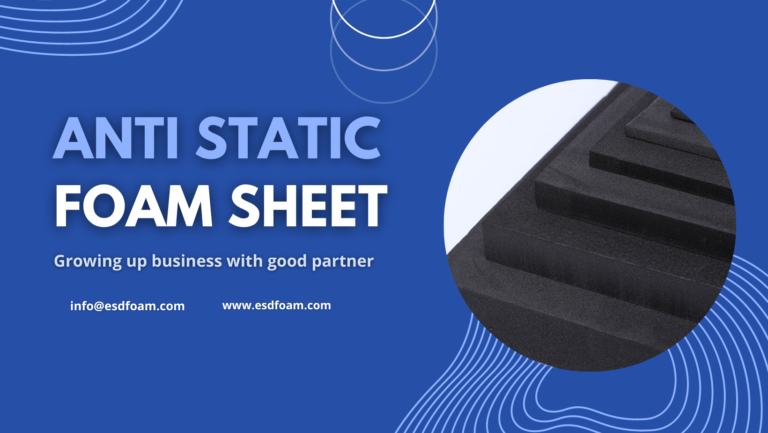Electrostatic discharge (ESD) can cause serious damage to electronic components, making it important to use the right type of anti-static foam to protect against it. Two common types of anti-static foam are ESD PE foam and ESD EVA foam. In this article, we’ll compare these two types of foam and look at the advantages and disadvantages of each.
ESD PE Foam
ESD PE foam is made from polyethylene, a lightweight and flexible plastic material. The addition of conductive or dissipative materials to the foam provides anti-static properties that protect against electrostatic discharge. ESD PE foam is commonly used in packaging and transport applications where the foam is required to provide cushioning as well as anti-static protection.
ESD PE Foam Advantages:
- ESD PE foam is lightweight and flexible, making it easy to handle and transport.
- It is resistant to moisture, making it ideal for use in humid environments.
- ESD PE foam is typically less expensive than other types of anti-static foam, making it a cost-effective option.
ESD PE Foam Disadvantages:
- ESD PE foam has a lower level of conductivity or dissipation than other types of anti-static foam, which may make it less effective at protecting against ESD.
- It has a lower density than other types of foam, which may make it less effective at providing cushioning or shock-absorption.
ESD EVA Foam
ESD EVA foam is made from ethylene-vinyl acetate (EVA), a lightweight and flexible foam material. The addition of conductive or dissipative materials provides the anti-static properties that protect against ESD. ESD EVA foam is commonly used in packaging and transport applications where the foam is required to provide cushioning as well as anti-static protection.
ESD EVA Foam Advantages:
- ESD EVA foam is lightweight and flexible, making it easy to handle and transport.
- It has a higher level of conductivity or dissipation than ESD PE foam, which may make it more effective at protecting against ESD.
- ESD EVA foam has a higher density than ESD PE foam, which makes it more effective at providing cushioning or shock-absorption.
ESD EVA Foam Disadvantages:
- ESD EVA foam is more expensive than ESD PE foam, which may make it less cost-effective for some applications.
- It may be less resistant to moisture than ESD PE foam, which may limit its use in humid environments.
Which one to choose from ESD EVA Foam and ESD PE Foam?
When deciding between ESD PE foam and ESD EVA foam, it is important to consider the specific requirements of the application. If cost is a primary concern and the foam will be used in a dry environment, ESD PE foam may be the best option. If anti-static protection and cushioning performance are more important, and the budget allows for a higher cost, ESD EVA foam may be the better choice.
Overall, both ESD PE foam and ESD EVA foam provide effective anti-static protection and cushioning performance. By understanding the advantages and disadvantages of each, you can choose the right type of foam for your specific application.





